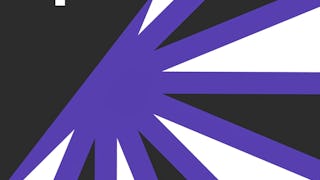This course covers the fundamentals of web UI/UX development, focusing on core concepts like HTML, CSS, JavaScript, and accessibility. You'll learn the history of web development, explore the HTTP protocol, and understand the interaction between servers and browsers.


Skills you'll gain
Details to know

Add to your LinkedIn profile
See how employees at top companies are mastering in-demand skills

There are 4 modules in this course
In this module, you'll learn the essential principles of HTML and gain a solid foundation in web development. You'll be introduced to semantic HTML, learning to identify and define semantic elements that improve accessibility. This module also covers common industry practices for casing and indentation, ensuring your code is clean and maintainable. By the end of this module, you'll be able to recognize key characteristics of HTML styles, use semantic elements effectively, and apply best practices in structuring your code. These skills will serve as a foundation for creating well-organized, accessible web pages.
What's included
12 readings2 assignments1 discussion prompt
In this module, you'll explore the essentials of HTML syntax and the importance of semantic HTML. We’ll start by covering basic HTML syntax and structure, including the use of hyperlinks and proper casing. You’ll also learn more about DevTools to understand HTML elements better. Moving forward, we'll delve into semantic HTML, which enhances accessibility and SEO by using meaningful tags like `<header>`, `<footer>`, and `<article>`. By the end of this module, you'll grasp how structured, semantic HTML can improve both the functionality and readability of your web pages.
What's included
6 readings2 assignments
In this module, you'll dive into the core principles of CSS and how it shapes web design. We’ll start with the basics of CSS syntax and explore fundamental concepts such as selectors, pseudo-classes, and pseudo-elements. You'll learn to manage styles using type, class, and ID selectors, and understand how to effectively load and apply CSS to your web pages. Additionally, we’ll cover the CSS Box Model and its impact on layout, including inline, block, and inline-block elements. By the end of this module, you'll have a solid foundation in CSS to enhance your web pages with custom styles and layouts.
What's included
2 videos5 readings4 assignments
This module you will complete a final assignment. The goal of this assignment is to create a semantic, valid HTML page listing "My Favorite Cats" using the knowledge from the provided course materials. Ensure that your HTML follows best practices for semantics, structure, and accessibility.
What's included
2 readings1 peer review1 discussion prompt
Instructor

Offered by
Explore more from Mobile and Web Development
 Status: Free Trial
Status: Free TrialBoard Infinity
 Status: Free Trial
Status: Free TrialUniversity of London
 Status: Free Trial
Status: Free Trial Status: Free Trial
Status: Free Trial
Why people choose Coursera for their career





Open new doors with Coursera Plus
Unlimited access to 10,000+ world-class courses, hands-on projects, and job-ready certificate programs - all included in your subscription
Advance your career with an online degree
Earn a degree from world-class universities - 100% online
Join over 3,400 global companies that choose Coursera for Business
Upskill your employees to excel in the digital economy
Frequently asked questions
To access the course materials, assignments and to earn a Certificate, you will need to purchase the Certificate experience when you enroll in a course. You can try a Free Trial instead, or apply for Financial Aid. The course may offer 'Full Course, No Certificate' instead. This option lets you see all course materials, submit required assessments, and get a final grade. This also means that you will not be able to purchase a Certificate experience.
When you purchase a Certificate you get access to all course materials, including graded assignments. Upon completing the course, your electronic Certificate will be added to your Accomplishments page - from there, you can print your Certificate or add it to your LinkedIn profile.
Yes. In select learning programs, you can apply for financial aid or a scholarship if you can’t afford the enrollment fee. If fin aid or scholarship is available for your learning program selection, you’ll find a link to apply on the description page.
More questions
Financial aid available,
¹ Some assignments in this course are AI-graded. For these assignments, your data will be used in accordance with Coursera's Privacy Notice.

